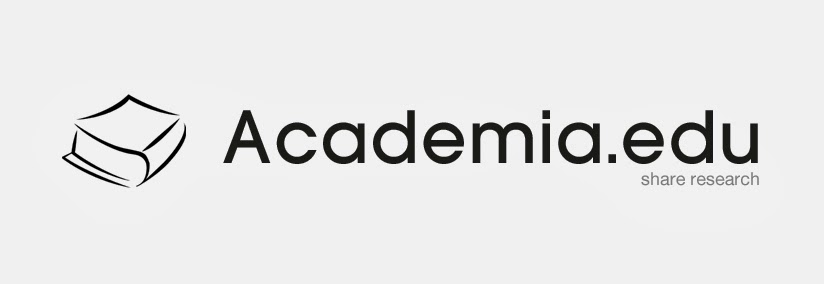INDUSTRI KREATIF INDONESIA: PENDEKATAN ANALISIS KINERJA INDUSTRI
Abstract
In 2008, the Department of Commerce of the Republic of Indonesia has launched a creative economic development documents interpreted the 2025 Indonesia became the starting point and guide the development of the creative economy in Indonesia. With the existence of this document, the industry and its stakeholders or other stakeholders can readily develop the creative economy in Indonesia. Economic development in the direction of the creative industries is one manifestation of optimism aspiration to support the Master Plan for the Acceleration and Expansion of Indonesia's Economic Development in realizing the vision of Indonesia are being developed nation.
The main objective of this study is the first to analyze the role of the creative industries in Indonesia for labor, value added and productivity, secondly, to analyze the performance trend of the creative industries sector, and third, to analyze the factors affecting the performance of the creative industries sector in Indonesia. Under Indonesia Standard Industrial Classification (ISIC) and codes 151-372 (manufacturing industries category) identified 18 industry groups belonging to the creative industries, showed that the performance of the national creative industries has been relatively high (in terms of trend analysis of the performance of the industrial creative). Furthermore, regression analysis of panel data (econometrics) indicates that company size (SIZE), wages for workers (WAGE) and the content of local inputs (LOCAL) has a significant impact on the performance of Indonesia's creative industry. Meanwhile, the concentration ratio (CR4) no consequences but have koresi significantly positive effect on the performance of Indonesia’s creative industry.Keywords
Full Text:
PDF (Bahasa Indonesia)References
BPS. 2000. Statistik Industri Besar dan Sedang Tahun 2000. Jakarta: Badan Pusat Statistik.
BPS. 2001. Statistik Industri Besar dan Sedang Tahun 2001. Jakarta: Badan Pusat Statistik.
BPS. 2002. Statistik Industri Besar dan Sedang Tahun 2002. Jakarta: Badan Pusat Statistik.
BPS. 2003. Statistik Industri Besar dan Sedang Tahun 2003. Jakarta: Badan Pusat Statistik.
BPS. 2004. Statistik Industri Besar dan Sedang Tahun 2004. Jakarta: Badan Pusat Statistik.
BPS. 2005. Statistik Industri Besar dan Sedang Tahun 2005. Jakarta: Badan Pusat Statistik.
BPS. 2006. Statistik Industri Besar dan Sedang Tahun 2006. Jakarta: Badan Pusat Statistik.
BPS. 2007. Statistik Industri Besar dan Sedang Tahun 2007. Jakarta: Badan Pusat Statistik.
BPS. 2008. Statistik Industri Besar dan Sedang Tahun 2008. Jakarta: Badan Pusat Statistik.
BPS. 2009. Statistik Industri Besar dan Sedang Tahun 2009. Jakarta: Badan Pusat Statistik.
BPS. 2004. Indikator Industri Besar dan Sedang Tahun 2004. Jakarta: Badan Pusat Statistik.
BPS. 2009. Indikator Industri Besar dan Sedang Tahun 2009. Jakarta: Badan Pusat Statistik.
Carlton, D. and Perloff, J. 2005. Modern Industrial organization. 4th edition. New York: Addison-Wesley.
Florida, R. 2002. The Rise of Creative Class: and How it’s Transforming Work, Leisure, Community and Everyday Life. New York: Basic Books.
Howkins, J. 2005. The Creative Economy:Knowledge-Driven Economic Growth. India: Jodhpur.
Jaya, W. 1994. Pengantar Ekonomi Industri. Edisi kedua. Yogyakarta: BPFE.
Kamil, A. Putri, R. 2012. Sistem Spasial Industri Kreatif Berbasis Kearifan Lokal Dalam Rangka Meningkatkan Kompetitive Advantage Nasional. Prosiding SNKIB II Untar, 2(1), 151-160.
Kementerian Perdagangan Republik Indonesia. 2007. Studi Industri Kreatif Indonesia. Jakarta: Kementerian Perdagangan RI.
Kementerian Perdagangan Republik Indonesia. 2008. Menuju Visi Ekonomi Kreatif Indonesia. Jakarta: Kementerian Perdagangan RI.
Kementerian Perdagangan Republik Indonesia. 2008. Pengembangan Ekonomi Kreatif Indonesia 2025. Jakarta: Kementerian Perdagangan RI.
Kementerian Perdagangan Republik Indonesia. 2008. Pengembangan Industri Kreatif Menuju Visi Ekonomi Kreatif 2025. Jakarta: Kementerian Perdagangan RI.
Kementerian Perdagangan Republik Indonesia. 2008. Program Kerja Pengembangan industri Kreatif Nasional 2009-2015. Jakarta: Kementerian Perdagangan RI.
Kementerian Perdagangan Republik Indonesia. 2009. Studi Industri Kreatif Indonesia 2009. Jakarta: Kementerian Perdagangan RI.
Khristianto, W. 2008. “Peluang dan Tantangan Industri Kreatif Indonesia”. Jurnal Bisnis dan Manajemen, 5(1), 33-48.
Kuncoro, M. 2001. Metode Kuantitatif: Teori dan Aplikasi Untuk Bisnis dan Ekonomi. Yogyakarta: AMP YKPN.
Kuncoro, M. 2007. Ekonomi Industri Indonesia: Menuju Negara Industri Baru 2030. Yogyakarta: ANDI.
Kuncoro, M. 2009. Metode Riset untuk Bisnis dan Ekonomi. Edisi Ketiga. Yogyakarta: BPFE.
Kuncoro, M. dan Suhardjono. 2011. Manajemen Perbankan: Teori dan Aplikasi. Edisi Kedua. Yogyakarta: BPFE.
Martin, S. 1989. “Market Power and/or Efficiency”. The Review of Economics and Statistics, 70(1), 3-15.
Lipczynski, J. and Wilson, J, 2001. Industrial Organization-An Analysis of Competitive Markets. Singapure: Pearson Education Limited.
Schere, F. 1996. Industry, Structure, Strategy and Public Policy. New York: Harper Colins Publisher.
DOI: https://doi.org/10.21107/mediatrend.v10i2.946
Copyright (c) 2015 Mediatrend


















